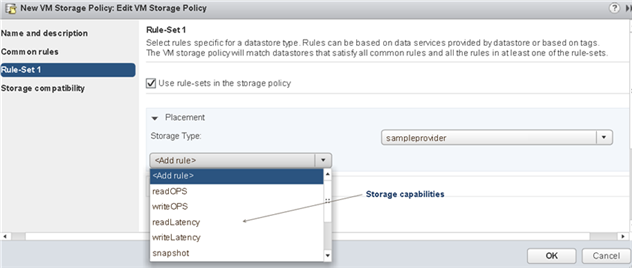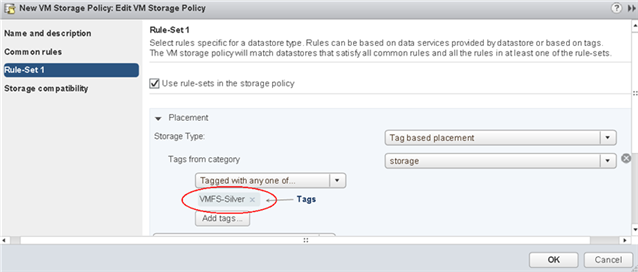To define a VM storage policy, you use the VM Storage Policy interface. Before you can use the interface, you must populate it with information about storage entities and data services that are available in your storage environment.
This information is obtained from storage providers, also called VASA providers. Another source is datastore tags.
Storage Capabilities and Data Services
Certain datastores, for example, Virtual Volumes and vSAN, are represented by the storage providers. Through the storage providers, the datastores can advertise their capabilities in the VM Storage Policy interface. The lists of datastore capabilities, data services, and other characteristics with ranges of values populate the VM Storage Policy interface.
You use these characteristics when you define capability-based placement rules for your storage policy.

The storage providers also represent I/O filters installed on your hosts. Through the storage provider, information about the filter services populates the VM Storage Policy interface. You include a specific data service in a common rule of a VM storage policy. Unlike storage-specific placement rules, common rules do not define storage placement and storage requirements for the virtual machine. Instead, they activate the requested I/O filter data services for the virtual machine.

Tags
Generally, VMFS and NFS datastores are not represented by a storage provider. They do not display their capabilities and data services in the VM Storage Polices interface. You can use tags to encode information about these datastores. For example, you can tag your VMFS datastores as VMFS-Gold and VMFS-Silver to represent different levels of service.
You can also use tags to encode information that is not advertised by the storage provider, such as geographical location (Palo Alto), or administrative group (Accounting).
Similar to the storage capabilities and characteristics, all tags associated with the datastores appear in the VM Storage Policies interface. You can use the tags when you define the tag-based placement rules.
